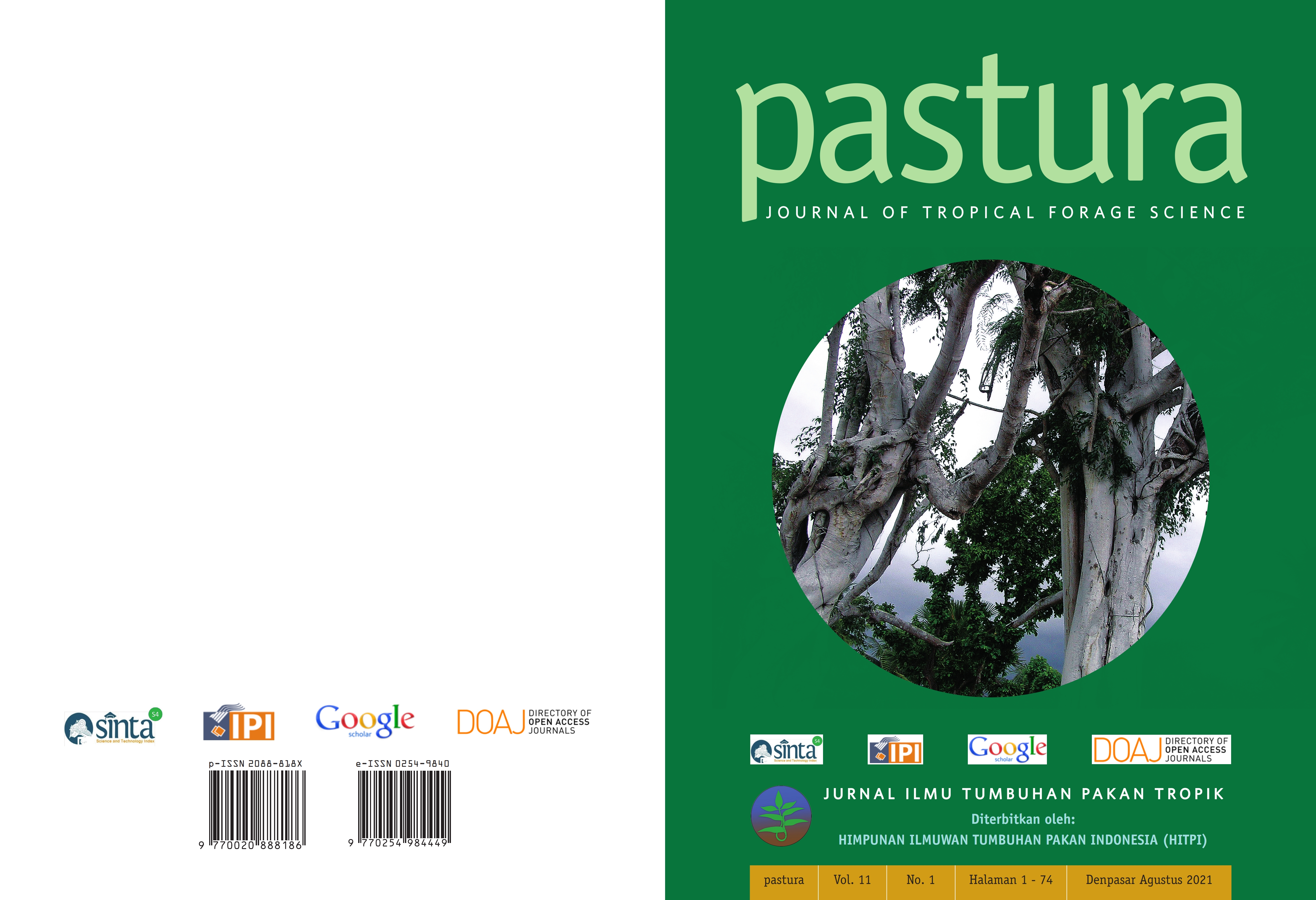GROWTH AND YIELD OF Indigofera zollingeriana AND Moringa oleifera Lam ON DIFFERENT BIOURINE FERTILIZER DOSAGES
Abstrak
The research aimed to obtain information about the growth and yield of Indigofera zollingeriana and
Moringa oleifera Lam on different biourine fertilizer dosages. The study was conducted at the Greenhouse,
Sesetan Research Station, Faculty of Animal Husbandry, Udayana University for 12 weeks. The design used
was a completely randomized design (CRD) with split plot pattern. The main plot was types of leguminocea
consisted of Indigofera zollingeriana and Moringa oleifera Lam. The sub plot was biourine fertilization
dosage consisting of: 0 l ha-1 (D0), 2.500 l ha-1 (D1), 5.000 l ha-1 (D2), 7.500 l ha -1 (D3) and 10.000 l ha-1 (D4). There were 10 treatment combinations and repeated 3 times so there were 30 experimental units. The variables observed were plant height, number of leaves, number of nodules, number of branches, leaf dry weight, stem dry weight, root dry weight, total forage dry weight, leaf dry weight with stem dry weight ratio, total forage dry weight with root dry weight (top root ratio) and leaf area per pot. The results of this research showed that there was an interaction between the types of legumes and biourine fertilizer dosages on the variable plant height, number of branches, and stem dry weight. Indigofera zollingeriana showed better growth and yield than Moringa oleifera Lam. Application of biourine fertilization could increase growth and yield in both types of legumes. Biourine fertilization with a dosage 10.000 l ha-1 had higher growth and yield. Based on the results of this research concluded that there was an interaction between the types of legumes with biourine dosages on variable plant height, number of branches and stem dry weight, and dosage 10.000 l ha-1 showed the best growth and yield.
Key words: biourine, growth, Indigofera zollingeriana, Moringa oleifera Lam, yield
##plugins.generic.usageStats.downloads##
Authors who publish with this journal agree to the following terms:
- All articles published by Pastura Journal Of Tropical Forage Science are made available under an open access license worldwide immediately. This means everyone has free and unlimited access to the full-text of all articles published in Pastura Journal Of Tropical Forage Science, and everyone is free to re-use the published material given proper accreditation/citation of the original publication. Open access publication is supported by authors' institutes or research funding agency by payment of a comparatively article processing charge for accepted articles (See Author Fees). Pastura Journal Of Tropical Forage Science publish articles under the Creative Commons Attribution License.
- Authors are able to enter into separate, additional contractual arrangements for the non-exclusive distribution of the journal's published version of the work (e.g., post it to an institutional repository or publish it in a book), with an acknowledgement of its initial publication in this journal.
- Authors are permitted and encouraged to post their work online (e.g., in institutional repositories or on their website) prior to and during the submission process, as it can lead to productive exchanges, as well as earlier and greater citation of published work (SeeThe Effect of Open Access).





